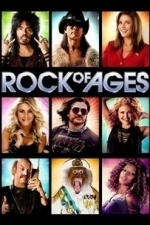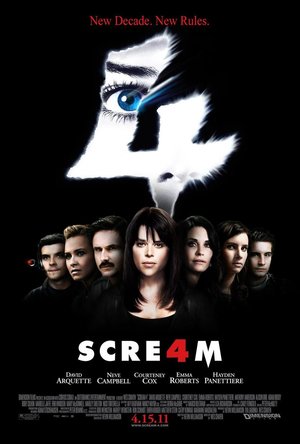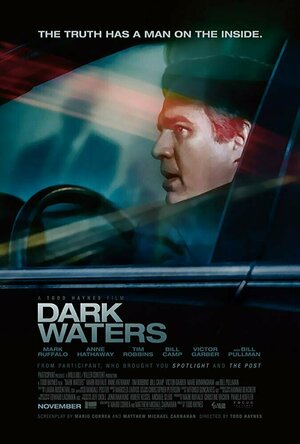Gareth von Kallenbach (980 KP) rated Rock of Ages (2012) in Movies
Aug 7, 2019
It is lightly satirical, a parody at times, that seems to mock our beloved 80’s rock era, while honoring its eccentricities, its tight leopard print pants, big hair, shoulder pads and over the top MTV music videos.
I like to judge a movie not only by how it makes me feel but also by how the audience reacts. This wasn’t an in-your-face-slapstick comedy, yet the whole theater roared with laughter throughout the film. To sum up the experience of Rock of Ages, it’s like watching a string of 80’s music videos mashed into a weak plot, with well-timed laughing points. Some of us laughed because we remember being the ones with those crazy hair-dos and out-of-control fashion sense and some were just laughing because this movie was so well done. It walked the fine line between super over-the-top corny and truly honoring our rock heritage. This movie does play to a specific demographic of ages 30 to 50, those who, with great nostalgia, remember how the 80’s rock and fashion revolution shaped their lives.
As the song goes, just a small town girl, Sherrie Christian played by Julianne Hough, travels to the big city in search of her dreams of becoming a singer, where she meets her city boy, Drew Boley played by Diego Boneta. Together they embark on a musical romance while working at a rock club named The Bourbon Room. Alec Baldwin plays an old rocker named Dennis Dupree struggling to keep his legend of a night club/concert hall open. Russell Brand, as always, steps in as the comic relief while playing the club owner;s assistant named Lonny. Together they work to keep The Bourbon Room afloat while dealing with a vengeful Patricia Whitmore, played by Catherine Zeta-Jones, who wishes nothing more then to see The Bourbon Room burned to the ground.
There are points in this movie when the acting, the singing and yes, even the plot, grabs you and holds your attention, much like watching the train wreck we call 80’s fashion. Its painful but you can’t look away! There were other times in this movie when the singing felt like it would go on forever. I noticed that the low points would be immediately succeeded by a very entertaining turn of events, so my attention was not lost for long. There came a point, at about the third Glee style 80’s rock mash-up, where I felt like slapping the director, Adam Shankman. Even too much of a good thing can get boring and I felt Shankman reached that point several times in the film. Luckily, he redeemed himself by bringing in Tom Cruise to play the Satan worshiping, alcoholic, megalomaniacal rock god Stacee Jaxx who went above and beyond in perfecting his role.
This movie’s soundtrack features songs and power ballads from Guns N’ Roses, Def Leppard, Bon Jovi, Journey, Twisted Sister, Pat Benetar, Scorpions, Whitesnake, Poison, REO Speedwagon, Foreigner among other epic bands giving Rock of Ages it’s 80’s jukebox musical foundation.
Mary J. Blige, Cruise, Ale Baldwin, Boneta, Hough and the whole cast of mega stars went above and beyond in selling their characters and performing stunning and accurate vocals that really pulled this movie together. The corny 80’s fashion and authentic dance numbers were the real icing on the cake. If you can sit through two hours of 80’s rock and pop nostalgia and know you will enjoy it, then definitely check this movie out.
Gareth von Kallenbach (980 KP) rated Scream 4 (2011) in Movies
Aug 7, 2019
Now in 2011, Craven and Williamson have returned with Scream 4, which is the planned first film in a new trilogy for the series with hopes to breath new life in a genre that has once again grown stale with ghost films and the so-called torture porn of the Saw films. Scream 4 is set 10 years after the events of the first film, and with a new book to promote, Sidney Prescott (Neve Campbell), has returned to Woodsboro as a best-selling author, thanks to her book on self-empowerment, a direct result of her experiences in the previous three films.
The return of Sidney is a happy moment for Sherrif Dewey Riley (David Arquette), but not so much for his wife Gale (Courtney Cox), who is facing a bad case of writer’s block and is not exactly thrilled with her fade from the spotlight and life as the wife of the sheriff in the small town. Things get shaken up when a couple of gruesome murders are discovered and before long Sidney is being targeted by a killer who seems to be repeating the pattern of killing that had haunted her in the past.
When the killer strikes again and taunts Sidney with a disturbing phone call, Gale sees the chance to regain her former glory and despite the wishes of her husband Dewey, sets out to solve the mystery of the killer before it is too late.
What follows is a twisting and turning plot that has you seeing suspects everywhere as the body count piles up.
The film introduces some new faces into the series and Hayden Panettiere and Emma Roberts make the best of their roles and actually bring some depth to their characters. Of course there are numerous horror and pop culture references in the film which not only lighten the tension but help with the plot. The killings are graphic and the mix of comedy and horror is in good balance. As usual, people are really dumb just before they get theirs and do not do things like phone for help, take a safer route, and so on, but the film is still enjoyable from a horror fan’s perspective.
There are some nice celebrity cameos in the film and while the film did drag a bit in the final act before the conclusion, the film did redeem itself in the end. While it is not in danger of being cited for a deep plot, original story, or deep characters with wide character arcs, Scream 4 knows who its target audience is and what the audience expects. Some may say the series stayed away top long and has lost its edge and simply repeats the pattern and plot lines we’ve seen in the previous films. In the end, despite some issues, Scream 4 delivers a welcome return to the franchise and paves the way for future sequels in a manner which should delight fans of the genre and franchise.
156Reviews (7 KP) rated Dark Waters (2019) in Movies
May 1, 2020
Films are important to us all for many different reasons, they show what we are, what we can be, what we aspire to be, of who we are. Sometimes that comes in the form of escapism, of dreaming that we can be better, Mark Ruffalo is no stranger to the genre I'm referring to, sometimes shows us our darkest fears and that we can overcome them, and sometimes, it shows us just how low, we as people can get, and never offer any kind of redemption. Dark Waters manages to be all of these things. A small intro before the film began had me franticly signing up to numerous petitions the second the film ended, joining a cause I didn't even know existed before I sat down to watch. This is why film is important, and why you should watch Dark Waters as soon as you can. So why the 3 out of 5 rating? Surely a film that EVERYONE should watch should get top marks, right? Unfortunately not.
The film begins with Rob Bilott (Mark Ruffalo), a corporate defence attorney, whose office is visited by a farmer from his home town, trying to raise a legal case against DuPont, a multi-billion dollar business, the towns biggest employer, and a chemical company at the heart of potentially poisoning the towns water supply. As Billot investigates the scale of the issue, and its inevitable cover up, it all becomes alarmingly clear. Thousands of people are being poisoned, they're health will likely deteriorate and life threatening illnesses are now a high probability. To take a line from the recent movie Bombshell “somebody has to stand up, somebody has to get mad.”
That anger that should be felt, but for all the terrifying facts about the poisoning these people received on a daily basis, it never comes, the rage should be palpable. Instead it opts for giving us all the information, teaching about regulation and government intervention, or lack thereof, and the only temper in the film shows comes as a heated exchange in a board room that blows over as soon as it comes, and protesters outside courtrooms for fleeting moments throughout the movie. It should be seething instead of showing, giving us the knowledge we need through gritted teeth, not clinical, scientific and impersonal.
Dark Waters is off the mark with its tone, Mark Ruffalo's high-priced lawyer is too uncertain, a little too every-man, never really portrayed a hot-shot or an underdog, and the supporting cast fall into “Good Guy” or “Bad Guy” far too easily with no exploration into any depth of character. One scene has a DuPont representative, shown in great detail, every undisputable, despicable thing that his company has done to these people, and listens attentively, never upset or defiant but instead seeming slightly bored, before getting up and leaving. Every scene feels like it should be emotionally hard-hitting but never raises above a tap on the shoulder.
As the lesson goes on, the complete lack of morals DuPont has, becomes shockingly clear as they drag the case on for as long as they can, making sure Billot's firm spend more money and time than they are willing to pay. Bilot's home life becomes strained, which distracts from the main thread more than adds to it plot, he becomes distant from his wife, a woefully underused Anne Hathaway, and his health deteriorates under the weight of fighting, and in the end, the conclusion is murkier than the water supply. But he still fights, and in real life, Rob Billot is still fighting to this day to help the West Virginia community, and to change the way the corporations are regulated worldwide.
This film is important, and everyone should see it because it's message, just don't see it for its entertainment value, because that's few and far between.
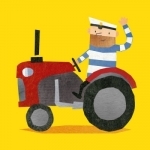
Fiete Farm
Education and Games
App
Cock-a-doodle-doo! Experience a day on the farm with sailor Fiete: drive a tractor, feed the cats...
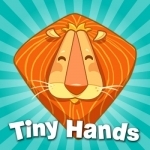
Kids preschool & kindergarten learning games free
Games and Education
App
** Fun EDUCATIONAL game for toddlers of AGE 3.5 and up ** Developed with certified child...
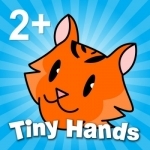
Lotto baby toddler kids games for girls boys free
Education and Games
App
*** Fun educational game for toddlers of age 1.5 and up *** English voice over – Learn first...
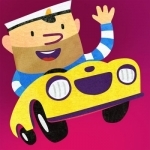
Fiete Cars
Education and Games
App
In Fiete Cars the children are the master builders. In this app kids can create their own car game....
Bob Mann (459 KP) rated Me Before You (2016) in Movies
Sep 29, 2021
Emelia Clarke (“Game of Thrones”, “Terminator: Genesys”) plays Lou Clark, an ‘invisible’ girl “with potential” who is trapped – due to unemployment-led poverty – living with her parents in a provincial castle town (a picturesque Pembroke, though notably hardly a Welsh accent in earshot). Her boyfriend Patrick (“Harry Potter”’s Matthew Lewis) is a running nut that doesn’t play to her romantic needs in any way. Circumstance leads her into the job of a carer for a quadriplegic, Will Traynor (Sam Claflin, from “The Hunger Games” sequels) who also happens to be the son of the local millionaire couple (played by Charles Dance and Janet McTeer). They own the castle, a large mansion and most of the surrounding countryside too.
Will – previously a sports jock – is paralyzed from the neck down after an accident and is a frustrated and suicidal mind in a useless body. Can the quirky and vivacious Lou bring him out of his morbid shell and find him a life worth living again?
From this outline, you might think the story almost writes itself, and for most of the film it does. But the writers have a number of twists and turns in store which – depending on your sentiments – might entertain or appall.
As her first leading actress role in a non-action feature it’s a bit difficult to sum up Emilia Clarke’s performance. At face value it could be described as an advanced case of over-acting, with an extensive array of kooky looks and gurning facial expressions. (Those eyebrows! At some point we’re going to have to see her acting opposite Cara DeLevingne in a “Batman v Superman” eye-brow-off). On the other hand, she plays the part with such vivacity and charm – and notably in a manner so in keeping with the character she portrays – that it is hard not to be enchanted by her: I certainly was.
Claflin plays the brooding and resentful Traynor well and Matthew Lewis shows he is growing into a really professional jobbing actor as he enters his mid-20’s.
Also radiant (she always is… sorry to break it to the wife like this… but I am basically in love with her!!) is the ever-gorgeous Jenna Coleman (“Dr Who”, “Victoria”) in what is to date a rare outing for her onto the big screen (she previously has only had a small role in the first “Captain America” film: she really needs a breakout movie like Carey Mulligan’s “An Education”). Coleman and Clarke make a very credible pair of sisters, with the “bed” discussion scene being very touching.
Elsewhere a number of other well-known faces crop up including Brendan Coyle (“Downton Abbey”) as Lou’s father and Joanna Lumley as a wedding guest with a handy line in references.
The soundtrack by Craig (“Love Actually”) Armstrong is top notch with pleasing songs from Ed Sheeran, Imagine Dragons, Cloves and We The Kings.
The production quality is as professional as you would expect from a British-made movie, although the Mallorca and Paris locations are not particularly well exploited, since for a large chunk of these scenes I was convinced they hadn’t left Pinewood!
So, a bit of a mixed bag, but enjoyable nonetheless. A guilty pleasure. If you like a romantic piece of escapism this is one for a wet Sunday afternoon, provided you have a box of tissues handy.
Gareth von Kallenbach (980 KP) rated The World's End (2013) in Movies
Aug 6, 2019
I cannot honestly think of a better way to wrap up the Cornetto Trilogy then the story told in TWE. For those that don’t know there’s a joke behind the Cornetto name, in that a report brought up that a Cornetto ice cream wrapper was featured in each of the first two movies. Shaun of the Dead and Hot Fuzz make up the first two movies, and TWE rounds out what eventually became the Cornetto Trilogy. Ice cream Easter egg aside, all the films in the trilogy share the same cast and crew. They star Simon Pegg and Nick Frost, written by Pegg and Wright, and directed by Wright. The films are chock full of inside jokes that go back as far as this incredible groups humble beginnings with the TV show Spaced. Beyond these connections, though, each films stands on its own as a unique story.
While Shaun of the Dead was the group’s take on zombie films, and Hot Fuzz visited the buddy cop genre, TWE is a comedic riff on films like Invasion of the Body Snatchers. If you have somehow made it this far without having the full plot spoiled for you, do try and keep it that way. The key things you need to know is that there are robots, creepy “YOLO” kids, and the story centers on Gary King, a man who never quite grew up.
Gary (Pegg) is a disaster of an adult male. He’s wild, rambunctious, trying to constantly relive his youth, and irresponsible to boot. This demeanor has not done any good for him as an adult on the far side of 40, but he’s delusional and is not aware that he has not succeeded in life. This actually adds to his charm.
Gary gets a bug up his you know what, and wants to relive one of his last greatest days of his youth. A day when he and his four best friends decided to celebrate finishing school by tackling the town-famous golden mile. Newton Haven has 12 pubs spread along a mile path that Gary manages to convince his friends Steven (Paddy Considine), Oliver (Martin Freeman), Peter (Eddie Marsan) and former best friend Andrew (Frost) to attempt again just like they did all those years ago. The pub crawl concludes at the film’s namesake: The World’s End.
As the evening goes on, and the beers start going down, the five begin to discover that something is off. Between rounds and pubs, the group starts to discuss whether or not the town has changed, or they have. This leads to a fight with the creepy “YOLO” kids that is reminiscent of Chinese Kung Fu movies the likes of Jackie Chan would be found in. As the mates progress from pub to pub, more and more of the mystery of Newton Haven begins to unravel.
The film starts in a deceiving way and hides its true nature underneath a veil of middle-aged men trying to reconcile their present with their past. Gary very much represents the past as he still dresses the way he did when he was 18, still drives the same car, complete with the same cassette tape of music given to him more than 20 years ago by Steven. Gary is a loser, but thinks he is the hero of every story, which causes a love/hate relationship with the group of friends. Then it all changes! Wright and company manage to do a complete 180 and combine a very believable mid-life crisis film with a robot invasion. And it works!
Pegg absolutely nails the role of Gary, from his movements to his banter with the others in the film. There is an air of desperation hidden under his free spirit persona. But surprisingly, it is Frost that steals the movie this time around. Andrew is the most well-rounded character he has portrayed, even through his transformation from a stiff professional into the atomic elbow dropping fighter he needs to become.
As I mentioned earlier, the fight scenes are very reminiscent Chinese Kung Fu movies. The choreography is amazing and the actors have no problem keeping up with the action and bringing the air of humor that the Kung Fu films bring as well. It is impressive watching Frost, a small man by no means, nimbly dispatch several foes. Meanwhile, Pegg is constantly thwarted by enemies as he unsuccessfully attempt to enjoy a pint. For a film billed as comedy, the few fight scenes are among the best of the summer.
As good and Pegg and Frost are though, it all comes back to the man behind the camera… Wright. He has a style that is distinctive and unique. He has shown his range over the years with shows like Spaced and films like Scott Pilgrim vs. the World. And his attention to detail is bar-none. Nothing is included in a shot if it doesn’t have some sort of meaning. Wright is a master film maker in his own right.
TWE is steeped in originality and creativity, which is sorely lacking in many films that are released these days. Wright is a master of deconstructing a genre film to honor it and make fun of it at the same time. Pegg and Frost have an uncanny knack for translating Wright’s visions to the silver screen. The World’s End is another example of their shining chemistry, and also one of the best films of the summer.
Gareth von Kallenbach (980 KP) rated The Place Beyond The Pines (2013) in Movies
Aug 7, 2019
Pines is the story of two men on opposite sides of the law, just trying to do the right thing and how what they do impacts each other’s lives, and the lives of their sons. Of course the means by which they got to the “right thing” was not always the “right way”, but ultimately they were trying to good.
Ryan Gosling plays “Heart Throb” Luke Glanton, a stunt motorcycle rider with a traveling circus. We open on him doing his thing in Schenectady, New York, and after his performance he sees Romina (“Roe”, portrayed by Eva Mendes). You can tell these two have history, as though they met the last time his little side show burned through town. Cutting through the awkwardness, Luke finds out that Roe had a kid. His kid, Jason. Though, he didn’t find out from her. Determined to make things right, despite Roe having moved on being with another man, Luke sticks around Schenectady to try and be part of his son’s life and to win Roe from her man. Only things don’t begin moving fast enough for him, and so turns to robbing banks in this small town as a way to provide for his lover and their newborn child. Only things go south fairly quickly and this puts him on a collision course with an ambitious rookie cop.
Bradley Cooper plays Avery Cross; a rookie cop on the force all of six months. After a harrowing deed that puts takes him off duty for several months and causes him so serious psychological issues which make it hard for him to even look at his son, Avery Jr. After his recovery, Avery returns to the force only to be thrust into a den of corrupt cops, gangs and a genuine fear for his life. He is not sure how to react at first, but eventually knows that he must do the right thing… even if it means ratting out his brothers in arms. This doesn’t prove to be an easy course for him, but he is determined to do the right thing, despite it tearing his family apart.
Act one of this film focuses on Gosling and Mendes’ characters and their tumultuous relationship. When they first brought Mendes on screen, I was really questioning the casting choice. By the end of the act, those questions were still there. It just didn’t seem like Gosling and Mendes had the chemistry that the makers of the film were desperately trying to portray. But we do see a lot into the character of Luke and how much he really just wants to be there for his son. Gosling did an excellent job with the role, but I feel like there was thing that was distracting from his performance: his hair. For some reason they decided bleach blond was the way to go to this character, but mostly what I was thinking when he was on screen was that it just looked out of place and I really had to concentrate to get past it.
Act two focuses on Bradley Cooper and the turmoil he goes through. I can’t say too much without giving away some major plot points of the film, but Bradley Cooper definitely did an excellent job playing the young rookie cop. He has an excellent supporting cast for his act with Harris Yulin playing his father, Rose Byrne as his wife and Bruce Greenwood as the District Attorney. He eventually manages to get from underneath all the lies, coercion and corruption to make a bid for an Assistant District Attorney position.
Fast forward to 15 years later, and this is where our act three takes place. Only now we are focusing on the lives of young Jason and Avery Jr. The deeds of their fathers in yester year, portrayed in our first two acts, affect our young subjects as they become friends without realizing the history between their families. I felt that Dane DeHaan who portrayed a 17-year old Jason knocked it out of the park with his performance. But there is something left to be said for Emory Cohen who is on screen as Avery Jr.
Want to know the rest? Watch the movie. Acts one and two, though long winded at points, blew me out of the water. Cianfrance did an excellent job of captivating the audience and making you care for the two focus points, despite them being on completely different sides of the law (as mentioned earlier). Act three, however, fell kind of flat to me. It very well could be a result of a poor casting choice in Emory Cohen, but I also felt like they could have shaped the end of this tail into so much more.
Overall, I actually enjoyed the movie, despite a lackluster ambition to go see it. Would I have gone to see it on my own if I had to pay for it? Nah! But it is a good date movie and might possibly start some interesting conversations between you and your partner.
